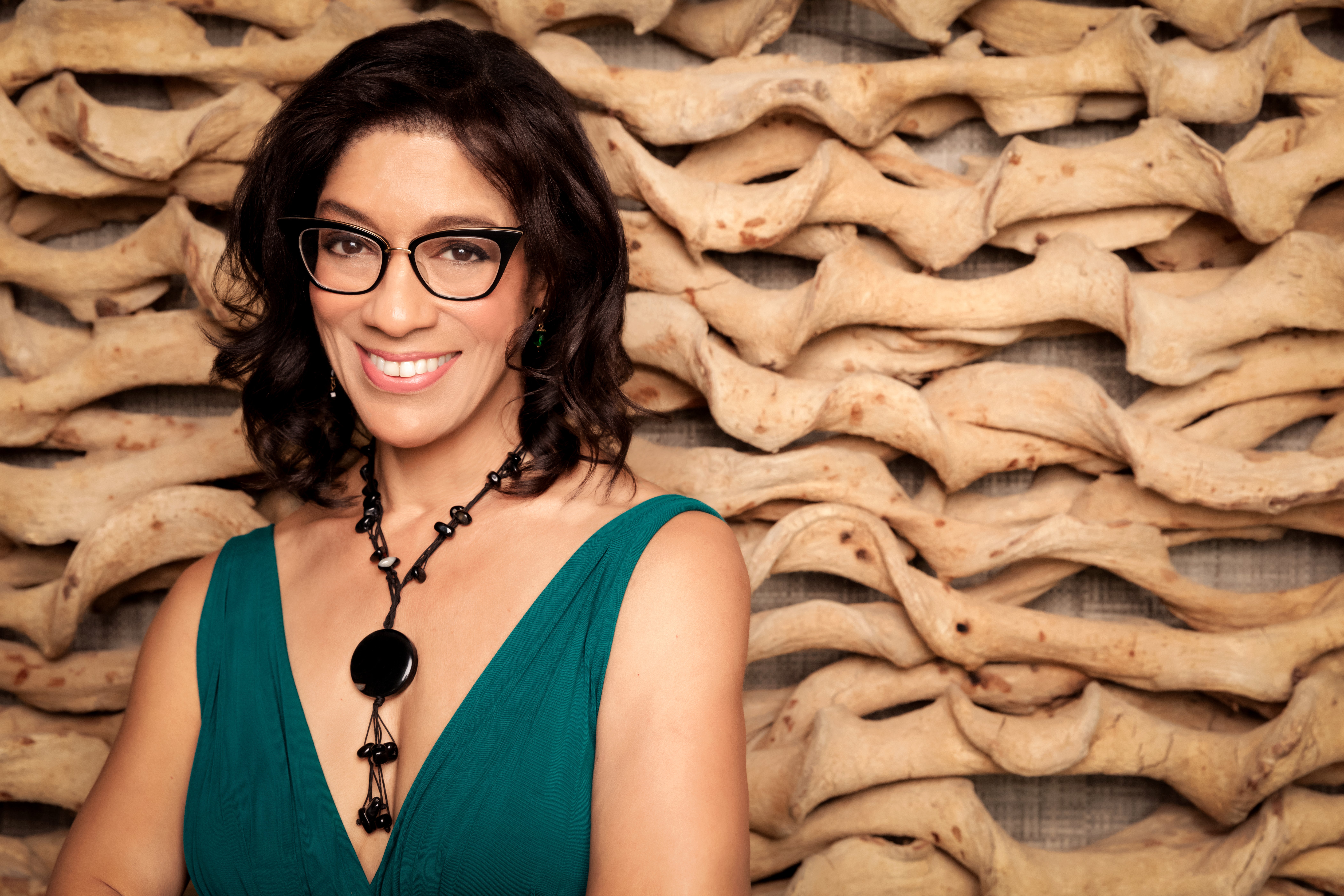The 50 States Project is a yearlong series of candid conversations with interior designers across the country about how they’ve built their businesses. This week, Las Vegas–based Linda Allen tells us how her varied background has shaped her design career, why she removed her lighting line from showrooms and how design can help with emotional processing.
What are your earliest memories of being drawn to design?
I’ve always been drawn to light—the sunlight coming through windows, and the colors that the sunlight creates through a space. From that early beginning, I knew that I was sensory. I was a professional ice skater when I was young, and I used to be backstage watching the lights dancing off all the skaters. I studied lighting first, then went back to college and got my degree in interiors and environmental design. I went to work for architectural lighting design firms, where I honed my skills on how to create lit spaces. But I was working for these large corporate and hospitality interior design firms and was jealous of what the designers were doing.
After three years, I went back into interior design—I started in commercial design and then ended up in hospitality. My first commercial client was Magic Johnson. I was working for a company that was based out of Texas, and they were closing their Los Angeles arm. I was a project manager for that L.A. arm, and we were working on his offices for tenant improvement. I actually had an opportunity to meet with him. He said, “We’re building a new office—would you be our interior designer?” So I went from tenant improvement to full-service interior design working for Magic Johnson. That was really one of my first projects doing commercial.
What made you pivot to residential?
I remember getting my first commercial contract and crying. I had to hire an attorney to help me with everything. I got through it successfully, but I realized that I didn’t want to go that route. That’s when Disney Imagineering picked me up. They said, “You’ve got this architectural lighting background. Can you be a project manager to help us create these storybook-themed lighting fixtures and work with interior designers and production designers?” So that’s what I did the next five years. I worked on customizing light fixtures for their theme parks, but I also worked as an interior design liaison for the lighting design team. It was really interesting. After that, I went into residential design because I wanted to create hospitality-like environments. I felt that they had these secret emotional reasons [that made] you feel a certain way in space.
When you talk about lighting design—in that field, what is your role on a design team?
Well, without light, you can’t see. It’s what creates our moods. You can have a beautiful texture, but what can make you gasp or what makes you hold your breath, that has to do with lighting. If you look at movie sets and productions, and you look at what makes you laugh and cry, all those things have to do with how these spaces are lit, even in film.
When I create spaces, I create them with a light that I know can help enhance environments; the lack of light is also important. With enough light, we can focus on things we want to focus on—which also means that if you don’t like something, you don’t have to focus on it. I’ve learned depth through light; I’ve learned texture through light. I don’t know if I could create a design project without the proper lighting. I’m working on a space for the Palm Springs [Moderism Week] Show House right now—I’m doing a powder room and a laundry room—and those are completely dialed up with lighting.

You launched your own firm in 2002. How did you know it was time to go out on your own?
I had a comfort level in making decisions and having that confidence to create a project that would be suited for my client’s needs. I think it helps to work at another firm first, to see the nuances and to understand how to communicate with clients. You really need to understand the gestures and how to work with somebody, especially on a residential level. Early on in my career, I may not have understood that.
How did you find your initial client?
My first residential design project was a Disney exec. We had worked together on a project there, so he knew that I was part of the interior design and lighting design teams, and when I left Disney, he hired me to help with his home. When I was working on his project, I designed a complete conceptual board with a chocolate color palette, and it had real chocolates on it. I really dialed this board up, and I remember the client picked up the chocolate and started eating it.
Did it work? Did he sign off on it?
Yeah, he did! It was hysterical.
How did clients find you from there?
When I lived in Hollywood, my house was down the street from a few designers. One of them was Michael Berman, and he asked me if I wanted to be part of the Pasadena Showcase House. After that project, I started getting clients from there.
And now you’re in Vegas. How did you wind up there?
Well, I got married. My husband worked for Zappos, and they’re a little bigger than me, so I had to move. That was in 2012—but the good news is, it’s only four hours from L.A., so I can drive back and forth, and I have projects in both places.
I’m in an area that’s kind of off the beaten path—we’re near the mountains, but it’s only 20 or 25 minutes away from the Strip. I feel like I’m in a little retreat, and I designed this little oasis here that allows me to excel and escape. I don’t feel like I’m in a desert; I feel like I’m somewhere else. But I’m always working, so I have my computer poised outside of the window on the landscape. I do like Vegas more and more; it grows on you.

Tell me about the local design scene in Vegas.
Right now, I’m working on a fast-track project. Basically they gave me the code to a completely empty home in a gated community. I am designing that from soup to nuts, and it’s been amazing. For a lot of these clients, these are their second or third homes, so they allow you a little bit more freedom to do design creatively.
How many projects are you typically working on at one time?
I can only work on a couple of projects at one time because they’re full scope. I choose to put every single bit of myself into a project where I can create that legacy for a client. I can only do that if I throw myself into it.
I don’t think it’s my happy spot to be running around back and forth and having a huge team of people; then I don’t really have the intimacy with the projects that I want. I like getting involved, I like being intimate, I like being the designer. I do have some people that help me out, but at the same time, it’s a small-run boutique, couture firm.
Do you have a team behind you at all, then?
It’s primarily me, and I hire as needed. I now have an assistant and a purchaser. I have vendors that work with me as needed, but I’m actually growing again, so I’m looking for help. It’s usually fewer than five people that work with me.
Are these full-time employees or independent contractors?
When I first started my company in residential in 2002, there were a lot of funds going into hiring employees. I understand the need to do that on a full-time basis, but it gets hard when you have to downsize a bit or you’re in between projects. The next thing you know, you’re trying to find them work and you’re attached, and you don’t know if you’ll find the same people again. It became very difficult because my profit level wasn’t there, so I had to lay off my team. When I got out here in Vegas and started working at this level again, I decided that I wanted to work with contractors for as long as I can.
During the pandemic, I have learned a lot about virtual. I think now more than ever, people are open to working virtually, and I think it’s great. You can hire in phases: one contractor to do the drawings, or your mood boards or social media. I think the pandemic opened up opportunities for us not to have to have as many in-person types of correspondence and designer assistance. I know a lot of people that are working right now out of their homes. We’re saving on that.
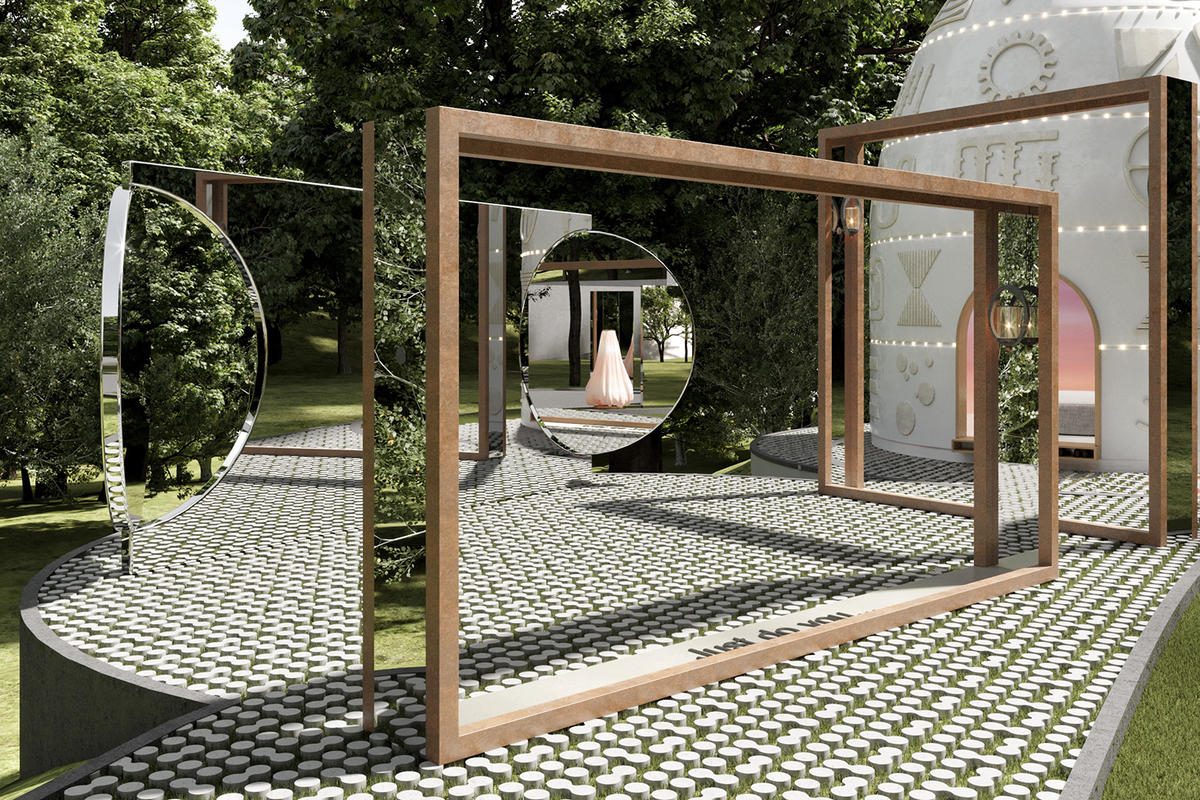
You have a lighting line. What made you want to launch that?
I have always designed out of the box. At Disney, I was designing all these [original] custom fixtures, and I had an opportunity to meet with fabulous vendors. It was always, “Yes, we can.” When I left, I went out on my own, and [was inspired by] my grandmother’s lamp rusting outside in my lounge area. I was like, “There are no battery outdoor lighting fixtures out here. I could do this.” But I didn’t realize that these lights are electronic fixtures, they’re not electrified. So you need to hire electronic engineers. I had to hire circuit board engineers and battery engineers. It was a completely new world. It was really nice that I created architectural drawings for them, but they wanted engineered drawings with metrics. They wanted the millimeters, so they could create proper check rings. So I had to hire someone to help me with that. Long story short, I got them out there. I think I am part engineer now.
How did you go about selling the line?
The products were in designer showrooms, but I took them out right before COVID. They’re online now, and people order directly through me. I don’t have a showroom.
Has that been a good change for your business?
Oh, it’s been so eye-opening. As interior designers, we never understand the vendor side. Now, when you’re a vendor pitching to an interior designer, you get to feel how it is on the other side. For that reason, I am very grateful. Now that I have done both sides, I’ve come full circle with all of it. I’ll tell you what it’s about: respect. It’s about all of us working together to make things happen. I am always gracious to all of my vendors; I have an appreciation now.
What made you pull the line out of showrooms?
Well, because of the profit. My lamps are made to order, they’re not a retail product. They average around $2,000 a fixture for me to make these things. They’re battery-operated outdoor-indoor fixtures, so they’re bespoke. When you work in the design showrooms, they take a percentage. So the residential firms are ordering maybe two fixtures for the right and left side of your sofa. You’re taking a lot of time and effort and money to go on trips and schlep your lamps and go into showrooms. You might get a few orders here and there, and you’ve also got commission and marketing materials. So I ended up pulling out because [the financial equation] was a bit lopsided for me. There are more opportunities now for virtual [sales]. Ten years ago, who knew we’d be here?
Now we’re in a different spot. Before, I had a PR company working for me. Now, you call me directly because you want an emotional story from me. You can’t get that from my representative. That’s why I think these design showrooms are actually moving to, “How can I help you? How can I be there for you? How can we help you source?” It’s a whole different way to do that.
I’m a small company. I’m not a huge lighting company that can absorb these marketing costs and then make two customized lamps. You can’t upcharge for every single little thing, because it just doesn’t make sense. You want to get your name out there, and you do it. It just didn’t make sense profit-wise for me. But you never know, I might do it again—but this is where I am right now.
You’ve got such a wide range of experiences. How does that shape what you can offer to clients?
I’m part engineer, part lighting designer, part architect, part interior designer. I’m at a point in my career when people hire me, drop the [keys] off and go, “Just do it.”
And you can do the whole thing.
I pretty much can. I understand how to talk to a contractor now. I understand how to talk to an electrician with my head high and tell them what type of lighting to use. I understand outdoor requirements and powder coating and all those pre-treatments that you have to do. I understand fabrics. I understand so much of it. The most beautiful thing is that I understand the story, and that’s the part Disney gave me. I understand that everybody has a personal story, and that’s what we seek.
Those are the things that make us happy. I came up with a blog called The Philosophy of Interior Design. In between these projects, I try to write. I’m not as consistent as I would like, but I’m looking for help to do that. I think there’s always a deeper meaning on why we choose something. I think we’re moving so fast-paced today that sometimes we forget to stay in the present, so that we can understand what it is that we like and who we are at the moment. I’ve just been really grateful to have this experience to use in a career for interior lighting design. You can take it to whatever level that you want—to fabrics and materials, or to a level of neurodiversity and a deeper meaning of design.
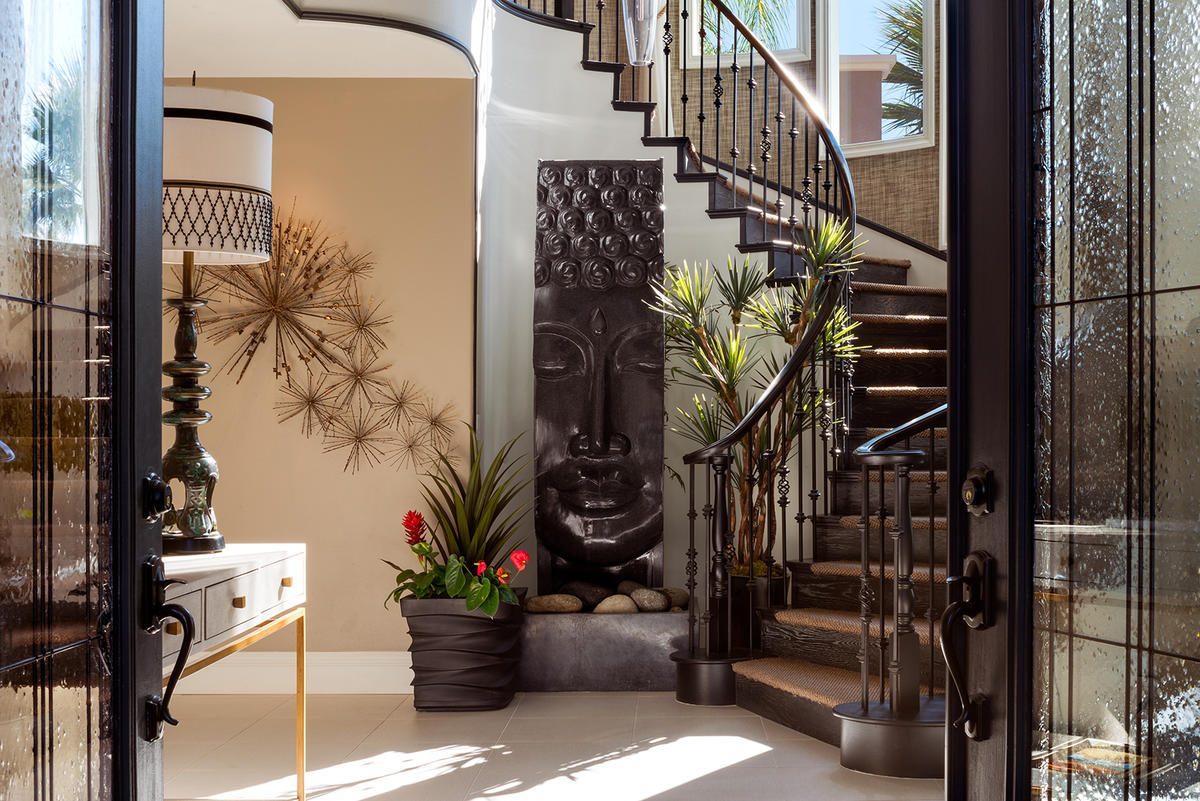
You mentioned that you’ve chosen to keep a small roster of current projects. How do you decide what you say yes to?
The first thing I assess is, “Are they nice?” I actually ask that! I ask the people that referred [their friends] to me.
Has anyone ever told you no?
They won’t say that, but they will say, “They’re challenging.”
So your current clients will give you the heads-up if they have a friend who might be a tough client?
Most people will, especially in the entertainment industry. You really want to make sure that the time you spend is worth it, because life’s too short. You go to bed and wake up with the same project on your mind, whether it is small or large.
Right now, I want portfolio projects. I really enjoy working from the ground up that way, or working on a remodel that way, because it allows me to use my background effectively to help others with signature designs. What better way to use all this experience, right? If not, then you’re not really taking full advantage of what you can get from me.
What is something that you want to put in your portfolio right now?
I want something that I’m proud of photographing, and that shows the extent of my ability. Those are sought-after projects. I’m not saying that I want something to call my own. I want something that can show the vast experience of where I can go with my design abilities that can help people understand and elevate design. At the end of the day, I never had kids, so I don’t know what my legacy is, but I think part of it is making people feel that they have something to call their own and that I helped them make that.
How do you decide which projects you shoot?
I had a situation where the client stopped [the project] before window treatments, so I chose not to photograph it. If it’s not something that I feel proud of, or if it’s not a completed project, then I’m probably not going to photograph.
My joy right now is challenging myself with projects that allow me to push all of my background into making it happen for people. It doesn’t have to be a full house, but those rooms have to have some form of expression. If you’re someone like me that’s been around a little bit, then photograph things you know can elevate your craft. If it doesn’t, maybe it’s something somebody else can find joy in or get some education out of. But don’t just photograph it for the sake of photographing it.
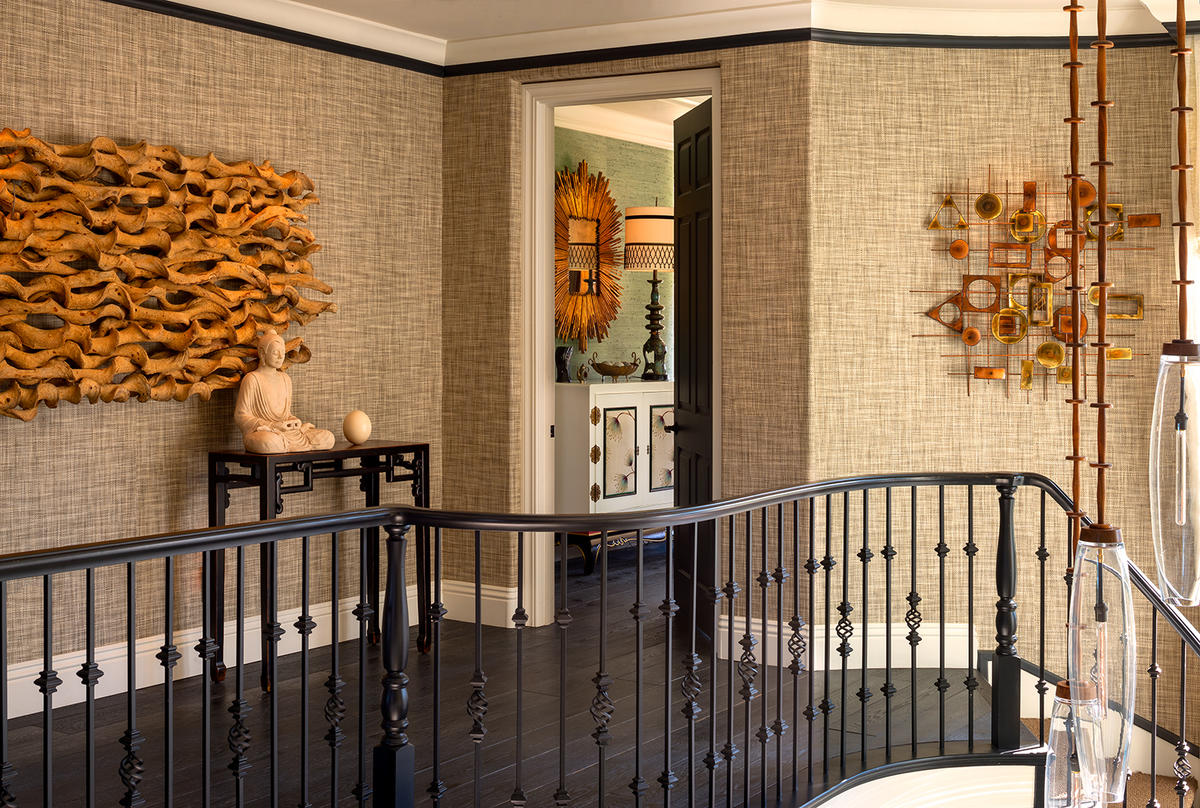
How do you bill your clients?
I used to charge hourly, but now if it’s full-service design, I charge design fees based on estimated hours for each phase of the project, and then a markup on the products that I touch.
Have you experienced pushback on markups, or are people pretty understanding?
If you say, “Look, you’re getting everything below retail—I’m following up on all of this stuff for you, I’m getting the receivers, and I’m making this happen for you,” I think they understand. I always try to be fair. There are gonna be some things where it is what it is—when you can’t get the discounts you want or things are going to be above the wholesale rates. If clients want to pick your brain on every single little number and all of that, then I don’t know if that’s the right fit. Or, I can design up to a point and then they can purchase on their own.
Is that a reason you would exit a job?
One of them. Our design business is super hard, and if you’ve got a personality situation that makes your job so much harder … I go back to, “Are they nice? Do they work well with others?” At the end of the day, we’re servicing people in the home, and it’s a huge investment. So, you just want to make sure that there’s a trust level. That’s why I am transparent. If they know the markups, they’re fine with that. To get clients like that, maybe that’s a challenge.
What does transparency mean to you?
It means giving my clients what I tell them I’m going to give them. I want to be upfront if things aren’t gonna work out a certain way. You have to be honest. We have delays right now. We’ve got a lot of stuff going on. So in my contracts right now, we’ve got that caveat [covering] things like natural disasters and all that stuff [outside a designer’s scope]. I think if you show your emotion a little bit, like, “I’m really excited about this for you. I just want to let you know that this may not be this way, or this came in broken.”
You never want to lose someone’s trust, so that’s why I’m transparent with numbers. If they have questions, it’s no biggie, they can do whatever they want to do—but they know I’m clear and honest. It’s hard. On one hand, when you’re on time frames, you want to put your best foot forward and try to challenge yourself, but some things aren’t realistic. You just do the best you can, and that’s all you can do. Life’s too short. I think it’s best to work on projects with nice enough people that have time to communicate with you. How do you know? Sometimes you don’t, and you might have to abort.
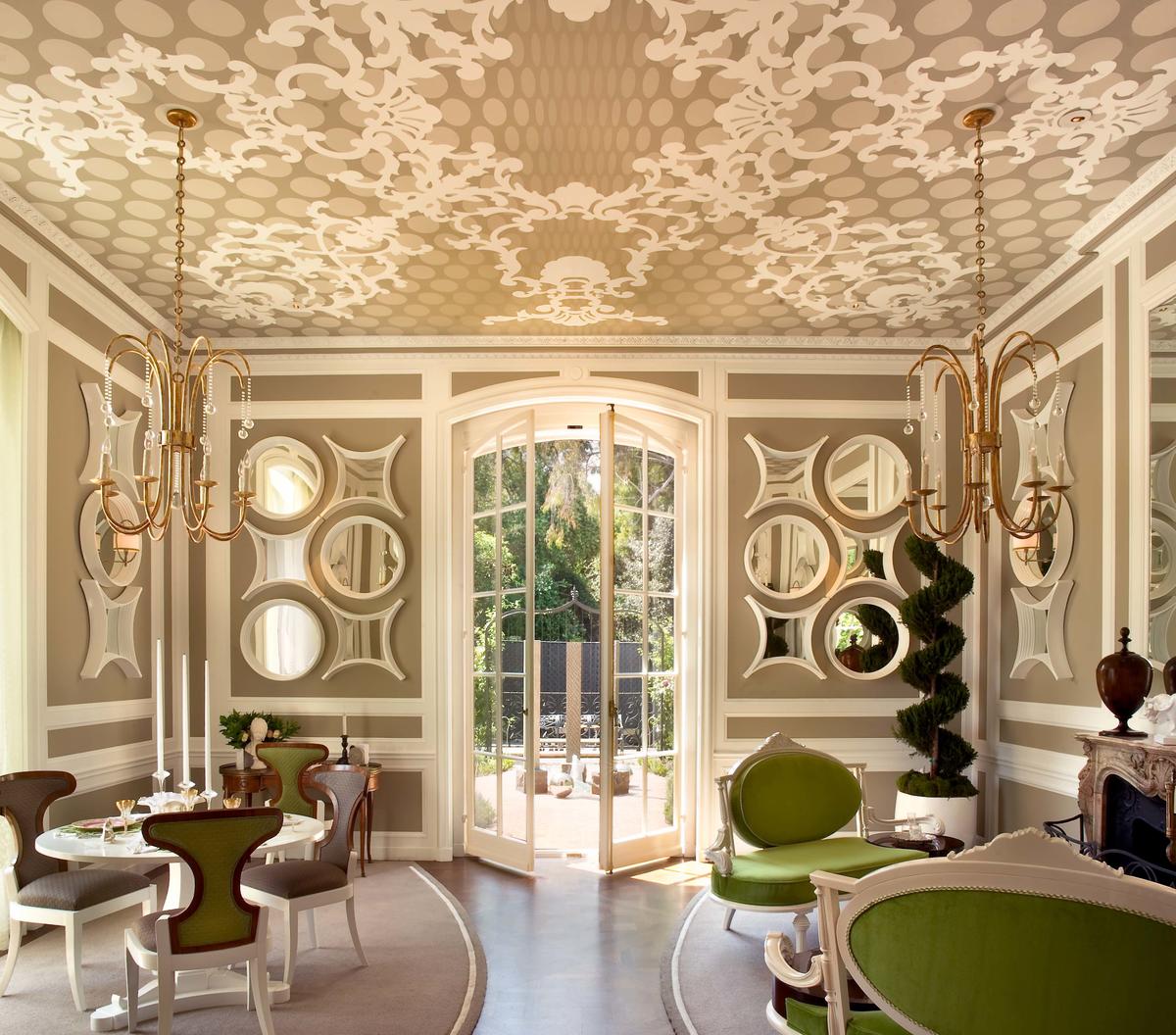
What does success look like for you?
I’ve been going through that because I’m working my butt off right now. Success means having the time to share my knowledge with others because I want to blog more about my design philosophies. I’d love to share more of my background in the deeper meaning of design. I really feel that emotional design is something that is part of our future and will lead into not only interior design, but everything. It’s where we’re going because we’re becoming less tactile. How else do we get through feeling a certain way, or understanding that [feeling]? Through our emotions. What better way to do that than through a design project? If you can feel and understand the light, if you can feel and understand the textures and materials, and learn why they’ve been used for you. I think it’s a beautiful experience because then you can get into understanding what makes you tick.
How do you approach the balance between fixtures and natural light?
When I got out of school and started working for architectural lighting companies, I had to learn how to do zonal cavity calculations. I understood Kelvin temperature and color rendering indexes early on. So understanding the nuances of that allows you to take all of that [into account]. I probably would have been a set designer if I wasn’t in interiors, because I study movies. At Disney, we got to be part of the set, and everything about a story. So, understanding all of that is a special sum. In my opinion, that’s the best part. The part that makes you cry, the part that makes you hold your breath, all of those things—lighting is an important aspect of that.
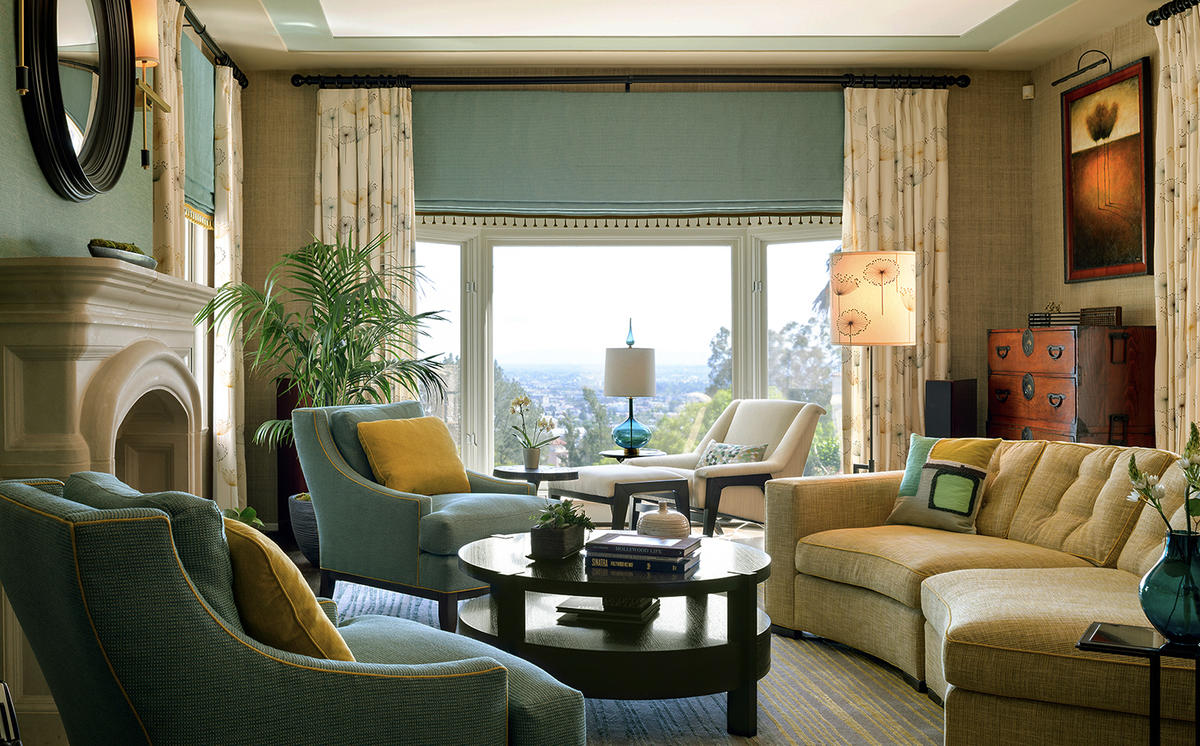
You created an extraordinary virtual space as part of the recent BADG showhouse. What was your objective in your room?
My whole storyline was about a Black overachiever not feeling good enough. That was super vulnerable for me to do, because part of it was personal.
You created a very cocooning environment. What elements helped make that space so healing?
Well, I did a lot of things. If you start on the top part, the colors—greens, and pale, pale pinks—were healing and grounding. I used curiosity there with books of knowledge, and things that would allow you to dig into your past to understand who you are in the future. In the present, I use tambour, a ribbed molding that I’m enamored with and using on all my projects right now. I used that for acoustics because it actually helps with acoustical design. I used lighting, because if you uplight, then you don’t have glare on your computer screens. I swathed the virtual design spaces with semicircular design elements, so that there was no cutoff and you can feel completely cuddled in a space.
I used biophilic materials that allowed you to feel like you are part of nature. I put an Oculus in the space because in the downstairs area there wasn’t any light, so you can look up to the light because light attracts us. In the gardens, I actually used my lighting fixtures, but I also created serpentine curves that allowed you to meander into the spaces. I used mirrors so you can see reflections of yourself in the middle of the landscape. I use words on the paths, like, “Look up,” and “It’s not so serious,” so that you’re honest with yourself. Being honest with yourself allows you to move forward because you let down your guard.
That’s extraordinary.
It was a lot of work, but I am super grateful for the opportunity. It also allowed me during the pandemic to dig deeper and educate myself more. I learned virtual interior design and e-design, so now I do photorealistic spaces on my own.
You taught yourself?
I did. I learned through this group [for e-designers], eDesign Tribe. I found it early on and was like, “This is cool.” So during the pandemic, I got on the train.
Does that change the way clients understand what you’ve designed for them?
Absolutely—drop the mic. If anybody out there is not doing virtual photorealistic design, please hire somebody. You can sell your design so much better and easier. You put it all together and say, “This is the concept. This is your story, and this is why I feel this is your story, because of what you told me.” I will never go back. I love it. It’s exciting to see these things and because of my lighting background, I even messed around with the lighting program [in the rendering]. Now, I have enough knowledge to make a complete design project with lighting in a photorealistic environment.
What kind of time investment goes into creating that?
Well, it’s like a piece of art. You can put as little [or as much] detail as you want in there. To be honest, you need a good six months and you need to keep practicing, but if you know SketchUp or AutoCAD, you can do it—and if not, go on YouTube and learn it. It’s a great tool. And like I said, emotional design is where we’re going. You can romance, you can create drama, you can do whatever. If you have a lighting background and put that into your photorealistic drawings, you’ve created a mood.
That has to feel incredible.
It feels incredible because I’m in control of my design. I come off confident and in control. I’ll show them the photorealistic drawing and they’re like, “OK. Let’s do it.” That’s what they’re hiring you for. So I think the more you can share a concept with somebody, the better, because that puts you in control of the project. Don’t piecemeal it, because that gives [the client] an opportunity to veto a detail that could be an important part of your project.
To learn more about Linda Allen, visit her website or find her on Instagram.
















